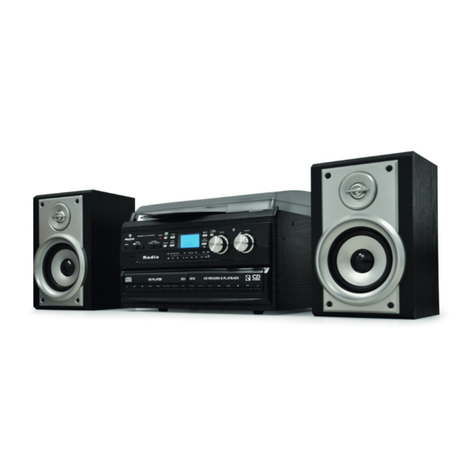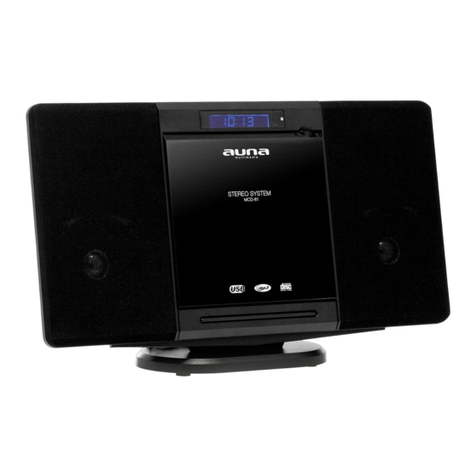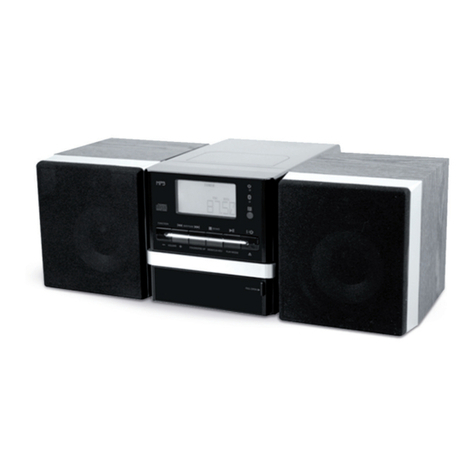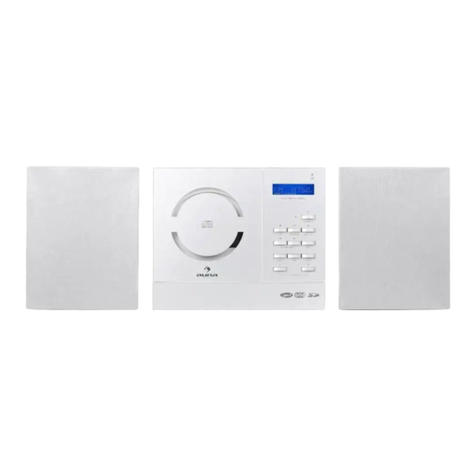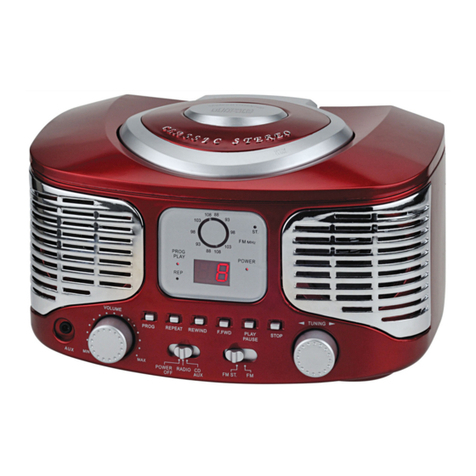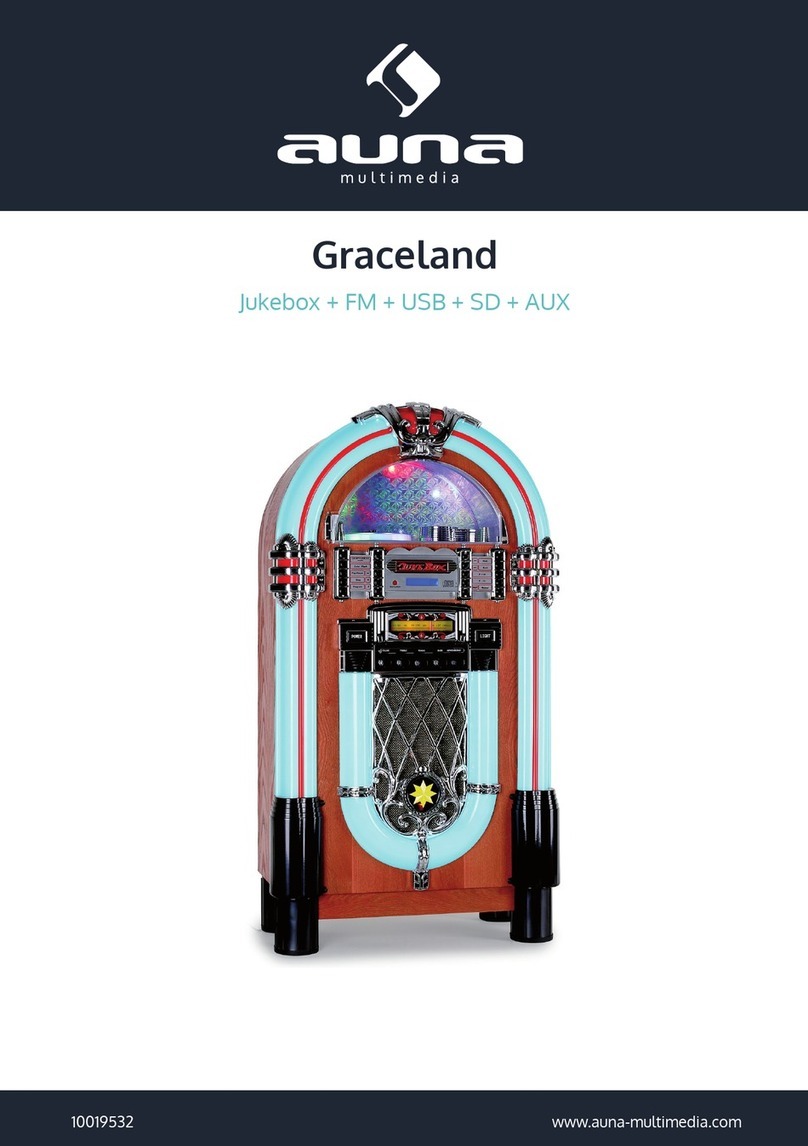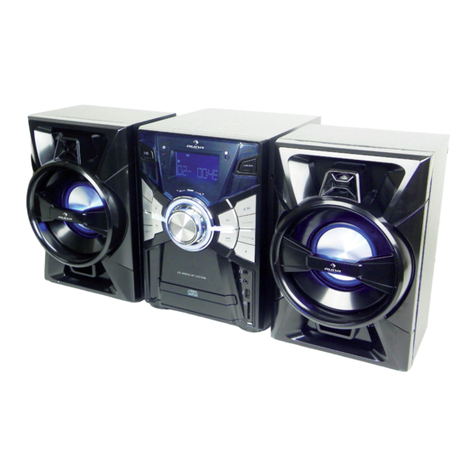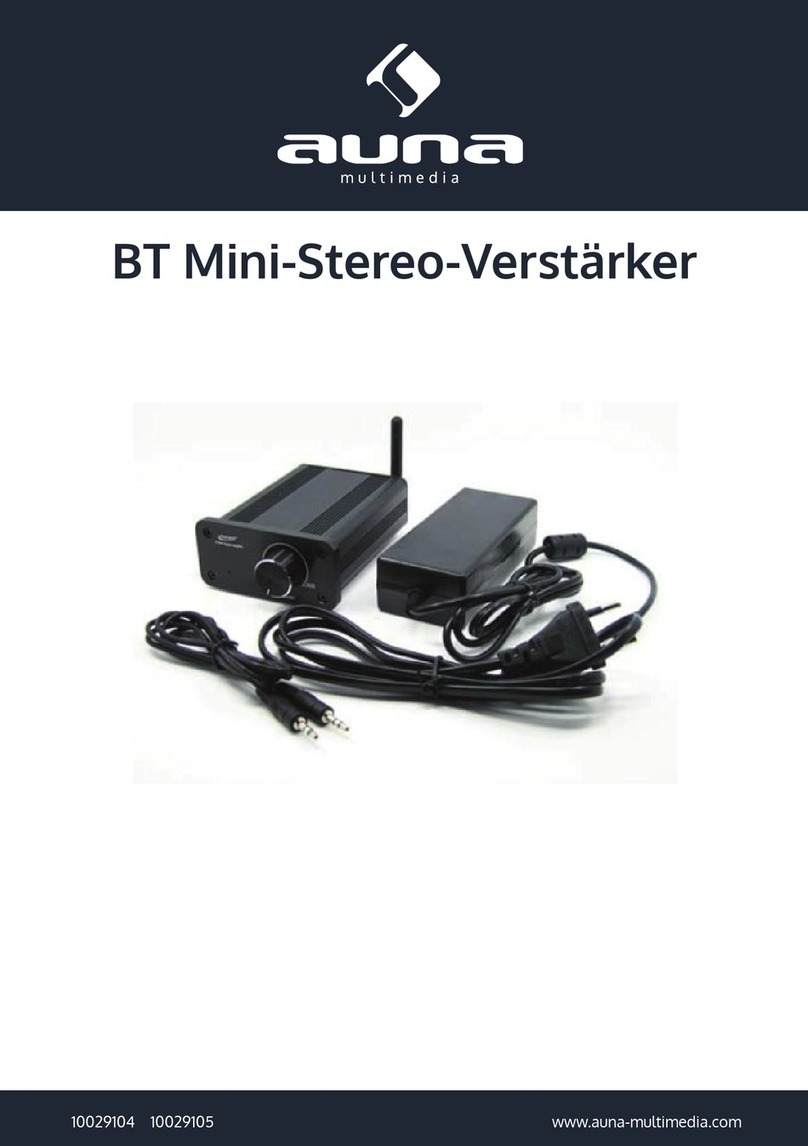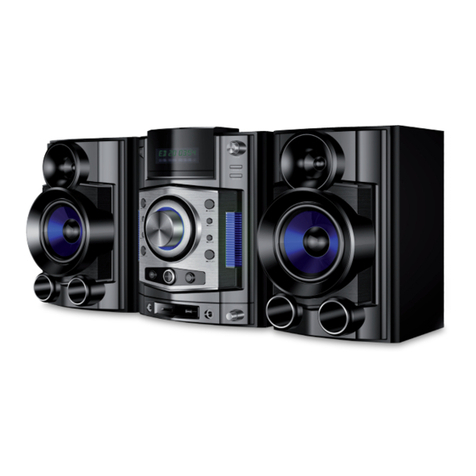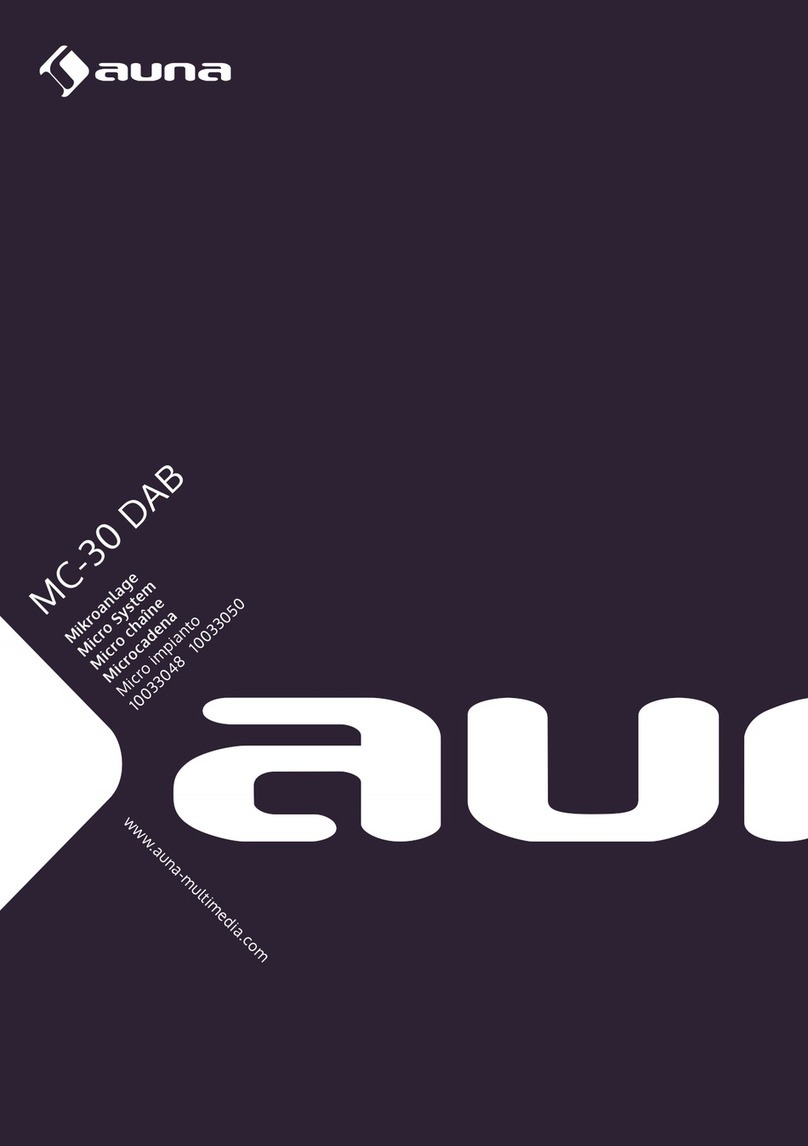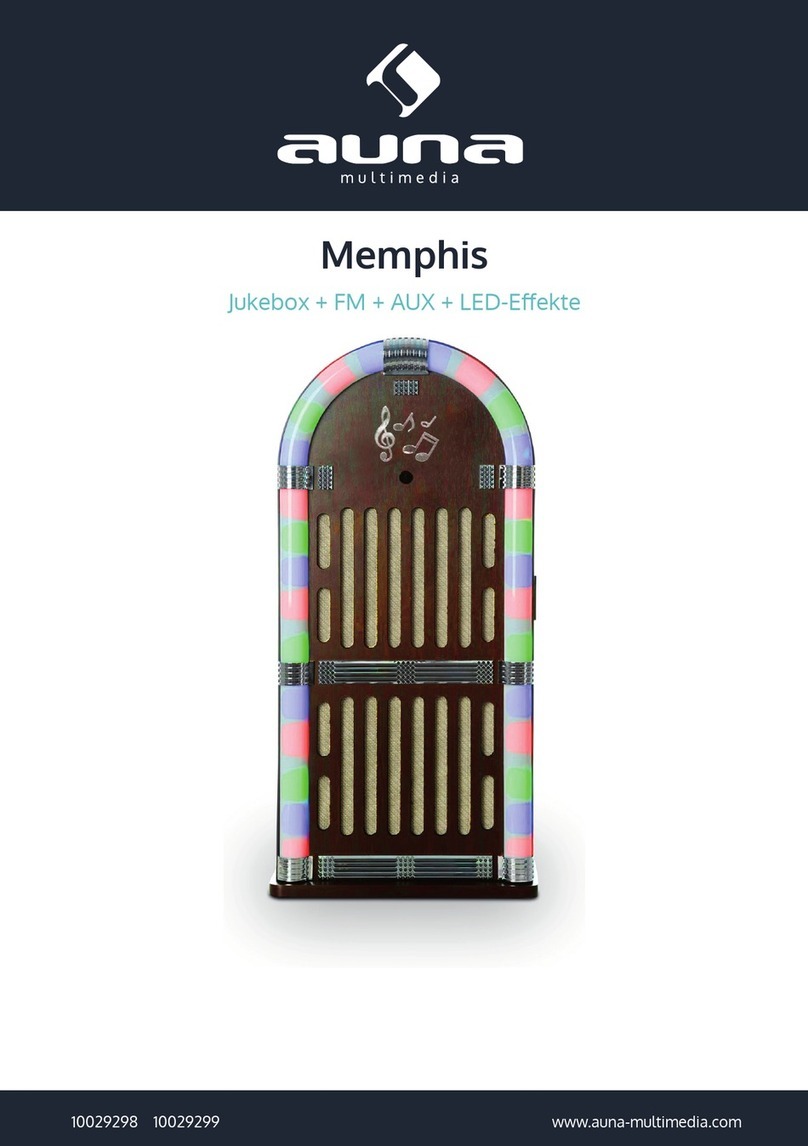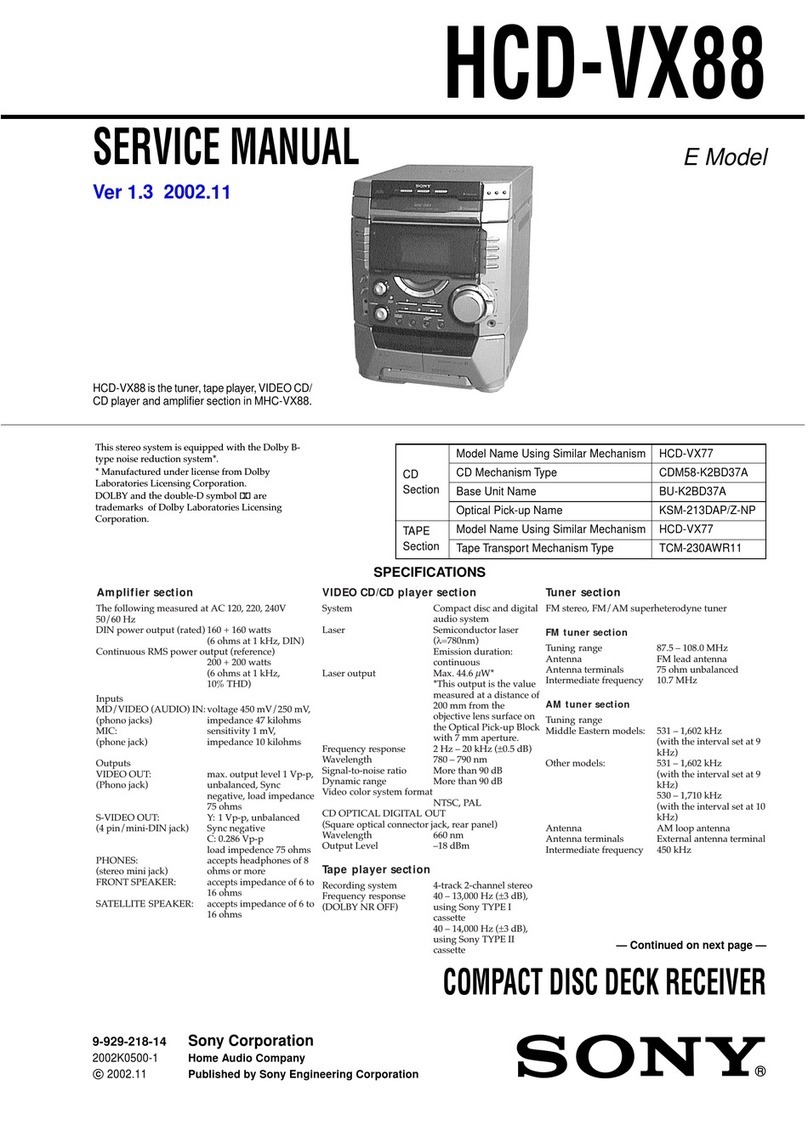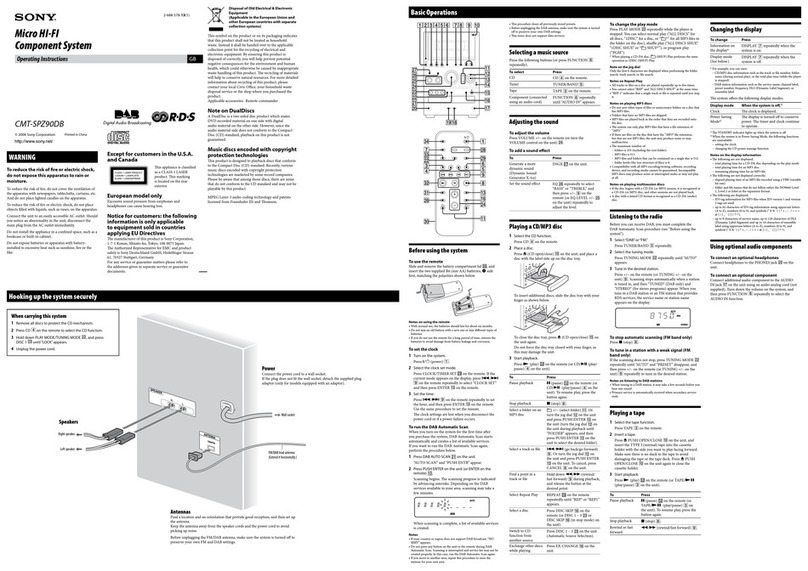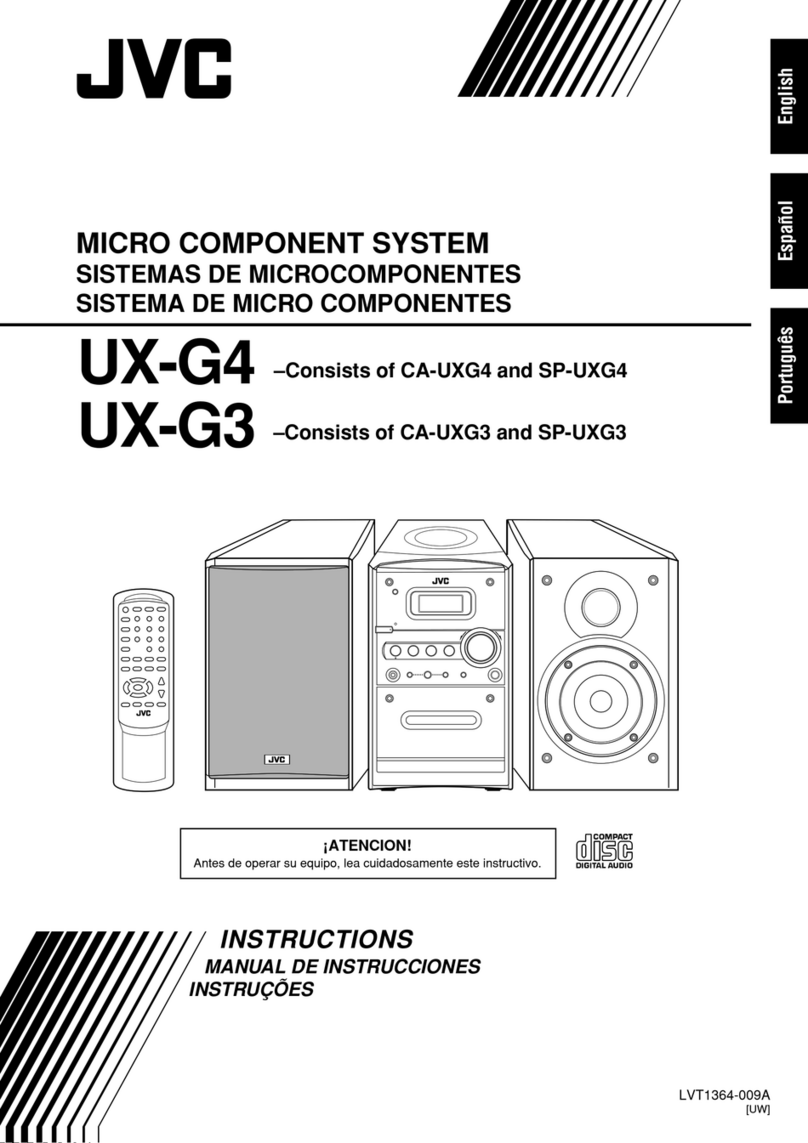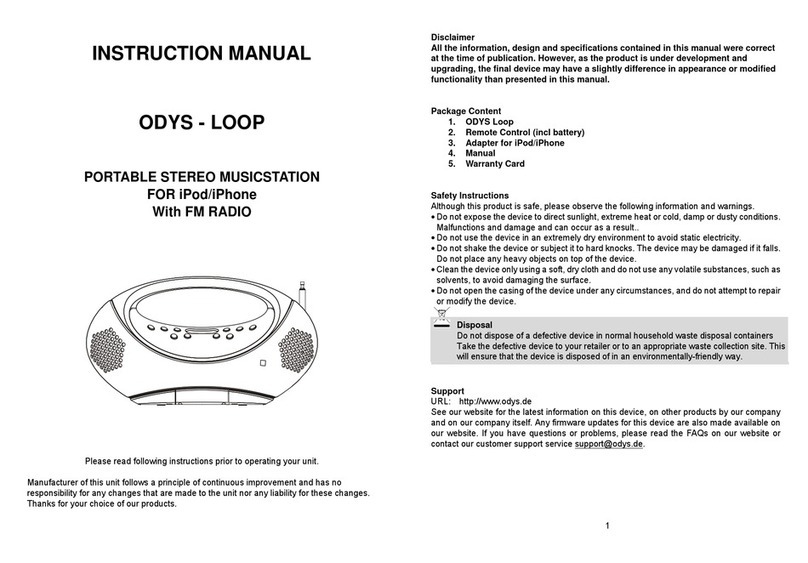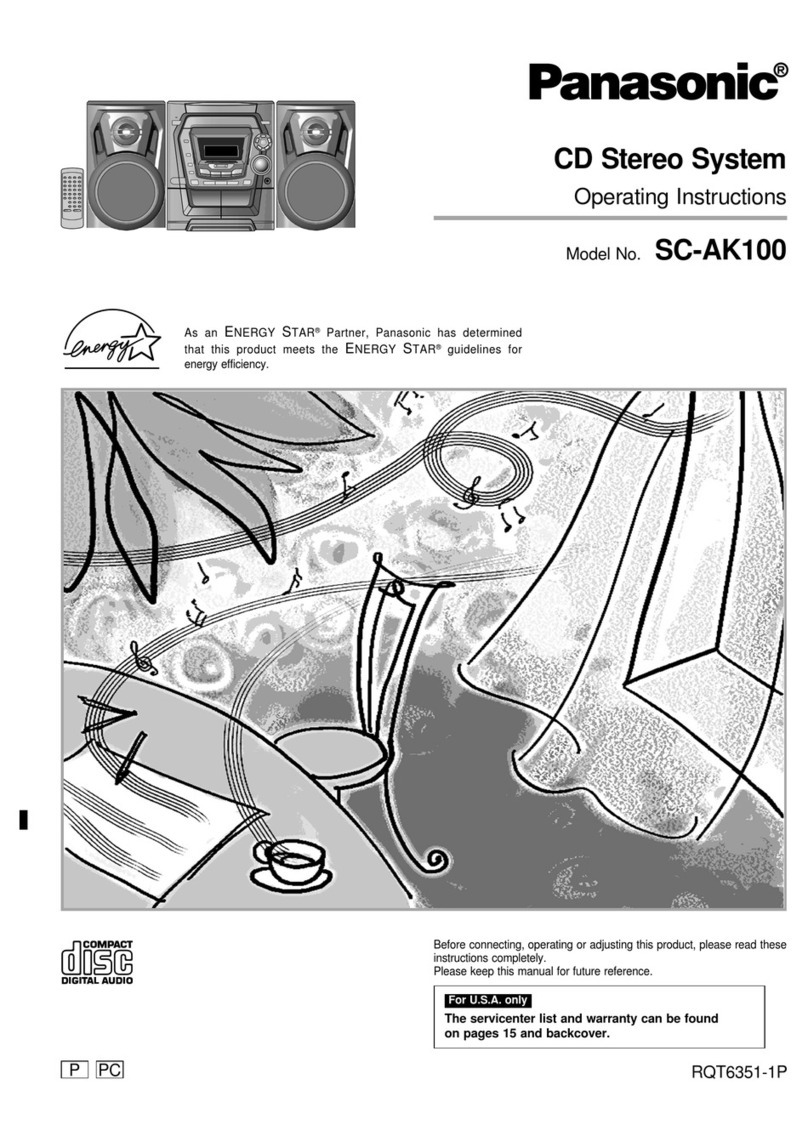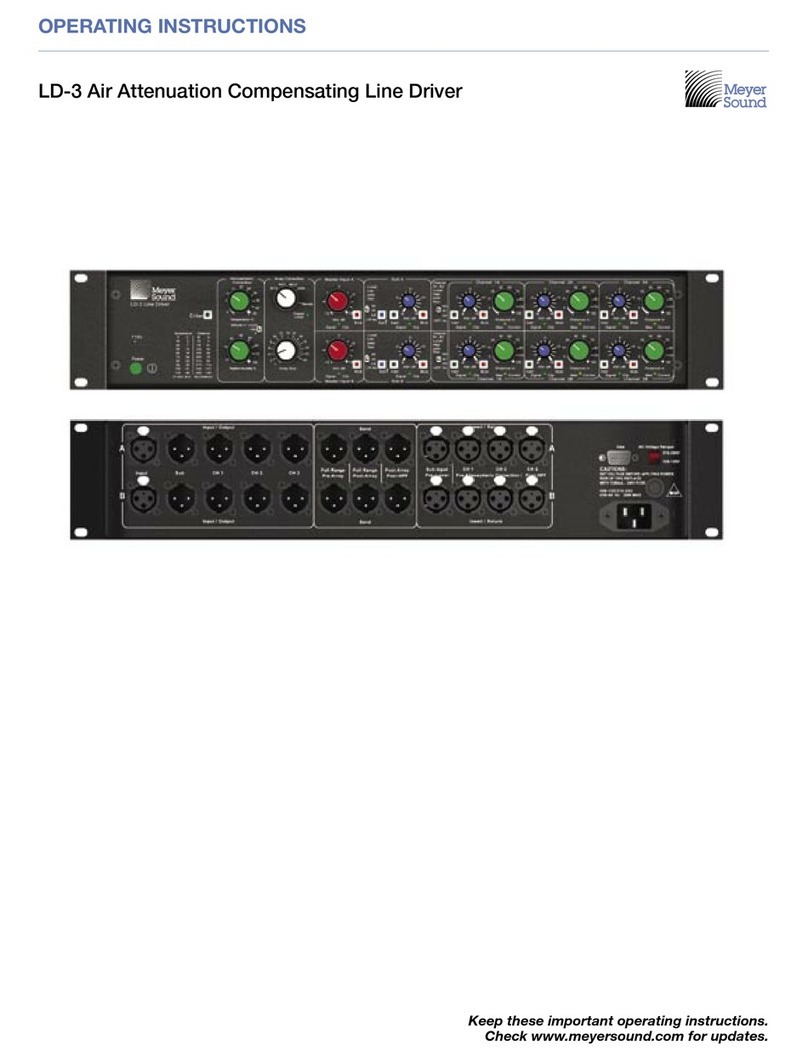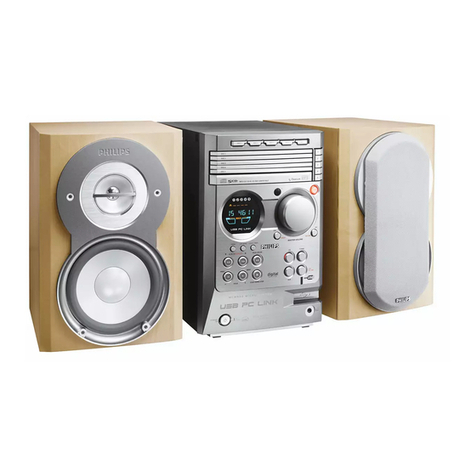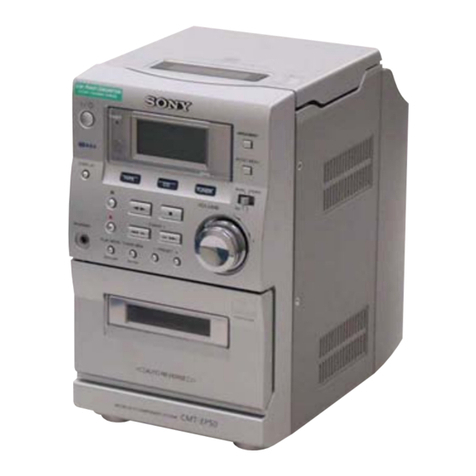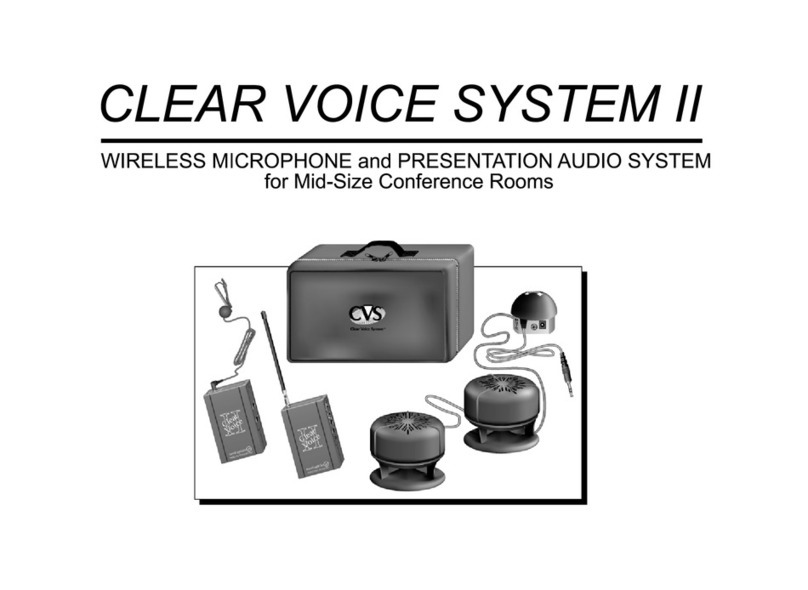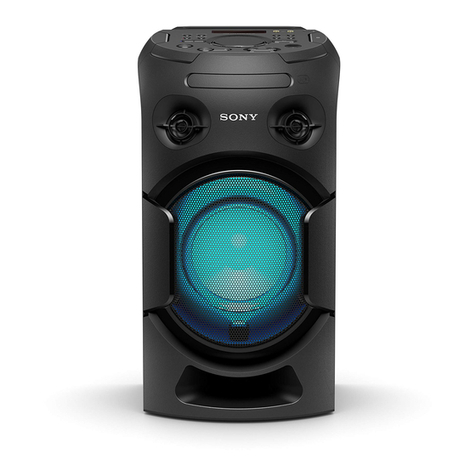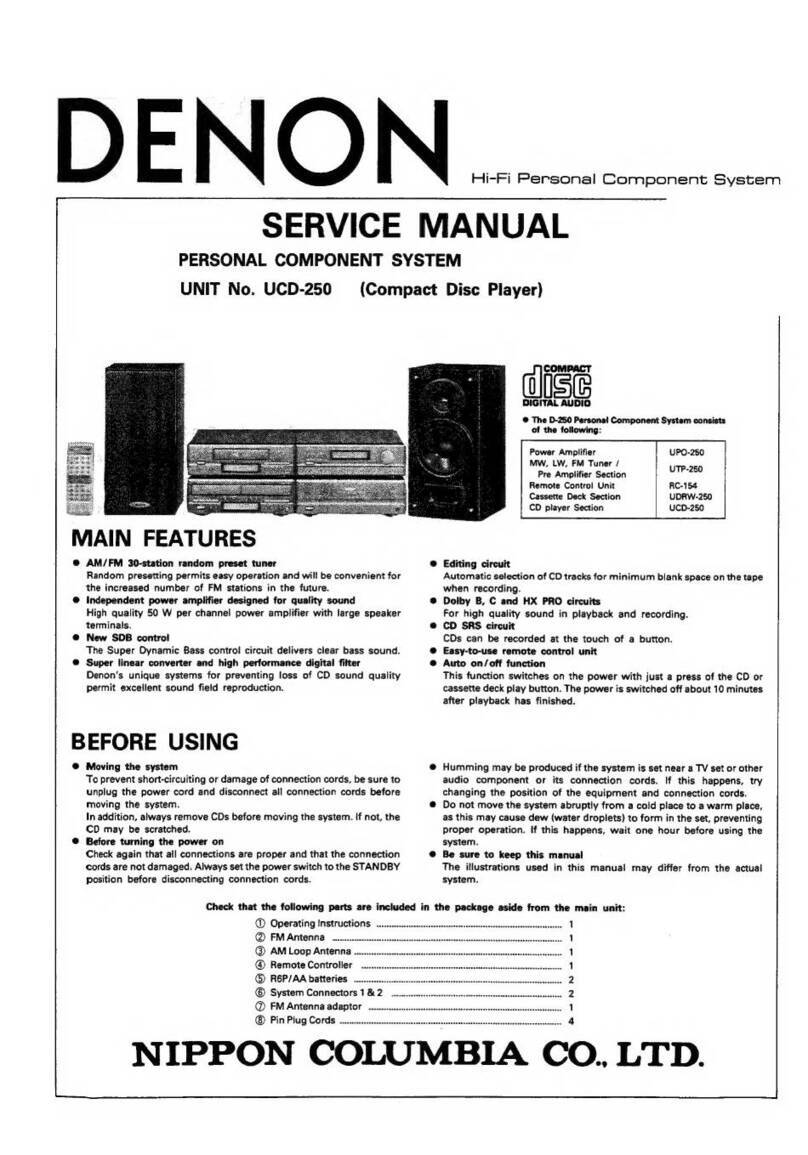
10
Gentile cliente,
La ringraziamo per aver scelto il nostro prodotto. La preghiamo di leggere e di seguire attentamente le se-
guenti istruzioni d’installazione e d’uso per evitare eventuali danni tecnici. Decliniamo ogni responsabilità in
caso di danni dovuti a una mancata osservanza delle norme di sicurezza e a un uso improprio del prodotto.
Dati Tecnici
Numero articolo 10005227
Alimentazione 230 V ~ 50 Hz
Potenza 600 W
Impedenza d’ingresso 47 kOhm
Sensibilità d’ingresso ≤ 280mV
Guadagno ≤ 2dB
Attenuazione crosstalk dx/sn ≥ 50dB
Alti ± 10dB
Bassi ± 10dB
SNR (Rapporto segnale/rumore) ≥ 76 dB
Distorsione armonica totale < 0.3%
Risposta in frequenza (20 Hz-20 KHz) ± 2dB
Max. potenza media in uscita > 12W (4 Ohm)
Max. potenza surround in uscita > 12W (4 Ohm)
Max. potenza totale in uscita > 28W (4 Ohm)
Avvertenze di sicurezza
• Collocare il dispositivo in un luogo ben areato. Non esporre il dispositivo ai raggi diretti del sole o a
fonti di calore. Non collocarlo in impianti incassati (librerie, armadietti ecc.).
• Avere cura del cavo di alimentazione. Non collocarci sopra oggetti pesanti e non calpestarlo. Non
tirarlo con forza né torcerlo. Scollegare il dispositivo dalla rete elettrica estraendo la spina diretta-
mente dalla presa di corrente, non tirando il cavo. Per evitare danni, non introdurre all’interno del
dispositivo piccoli corpi estranei e oggetti elettricamente conduttivi.
• Proteggere il dispositivo dall’umidità, dall’acqua e dalla polvere. Non collocare il dispositivo in ambi-
enti con elevata umidità e eccessivamente polverosi.
• Non collocare sul dispositivo recipienti contenenti acqua, come per esempio vasi, non esporre per
alcun motivo il dispositivo alla pioggia.
• Non pulire il dispositivo con solventi e detergenti organici volatili. Non pulire la custodia del disposi-
tivo con prodotti chimici, alcol, benzina e diluenti. Rimuovere la polvere con un panno morbido. Non
spuzzare spray per insetti nelle vicinanze del dispositivo.
• Non ostruire per nessun motivo le aperture di areazione. Esse sono molto importanti per evitare o
ridurre il surriscaldamento del dispositivo e gli eventuali danni che ne derivano.
• Non rimuovere la custodia di propria iniziativa. Se il dispositivo viene riparato, smontato e rimontato
da personale non qualicato, può riportare scosse elettriche e danni.
• Non ci sono parti del dispositivo riparabili dall’utente. In caso di danni o difetti, rivolgersi esclusiva-
mente a personale qualicato.


